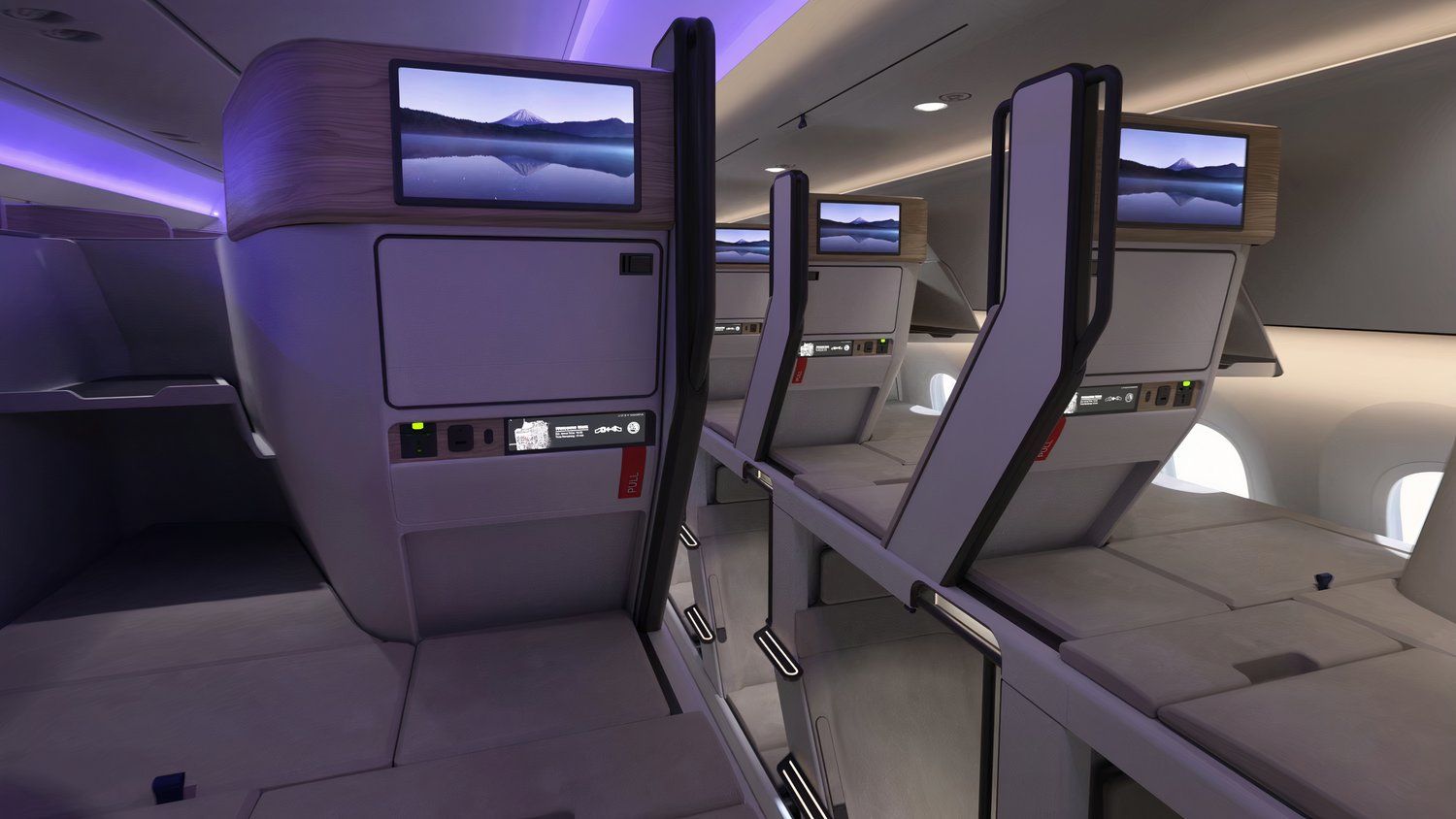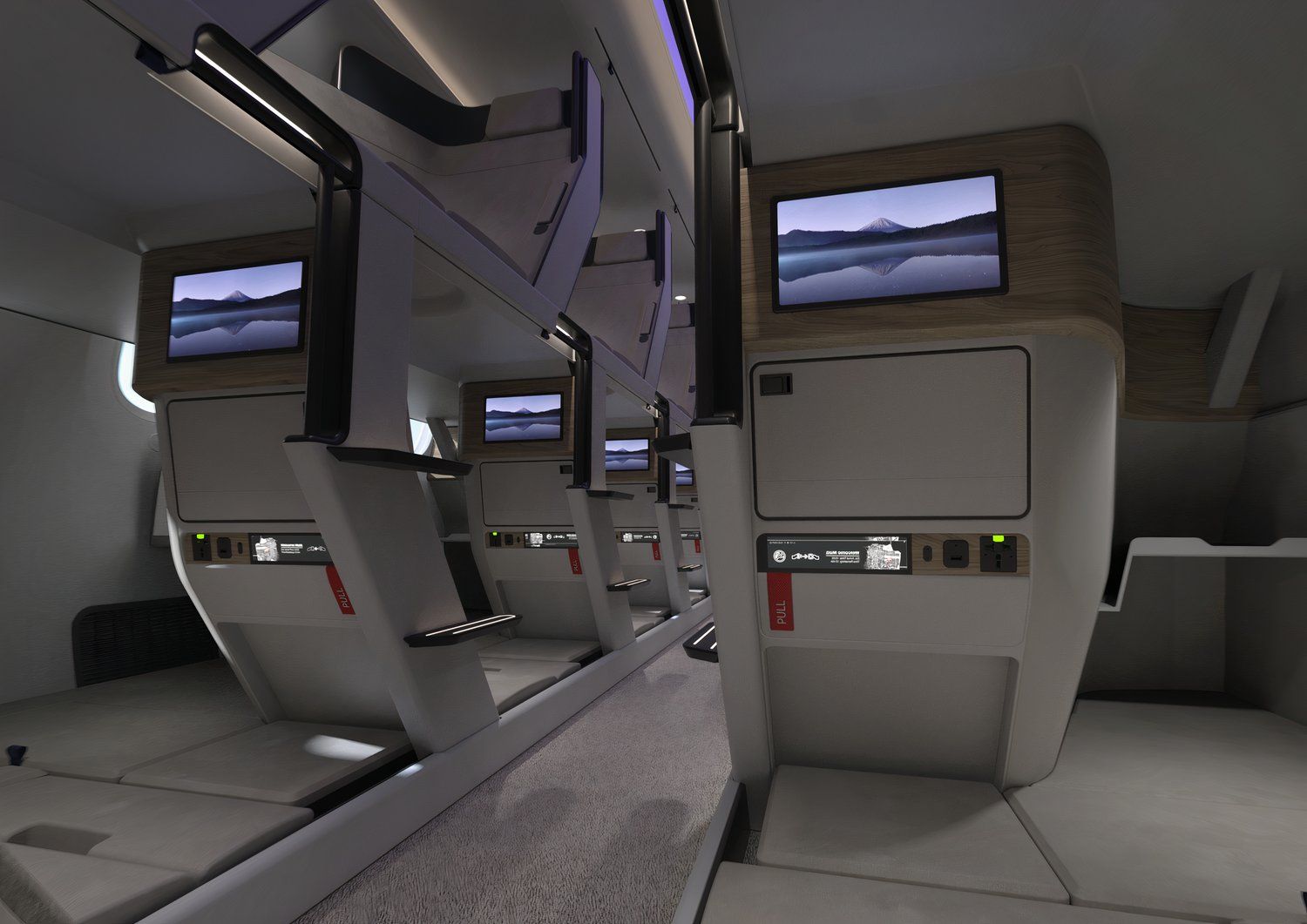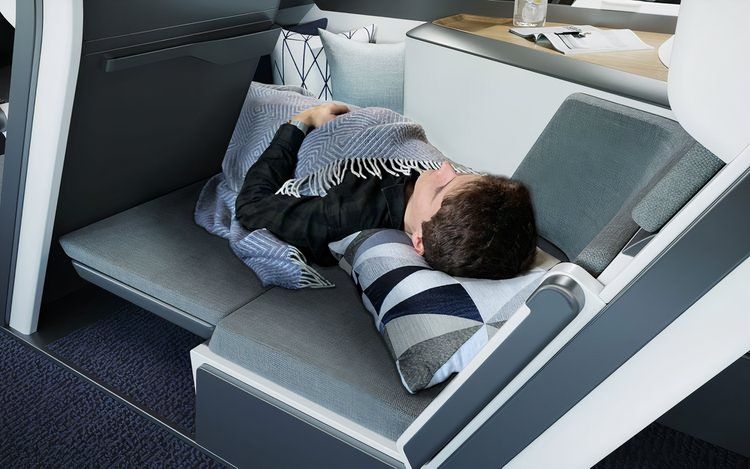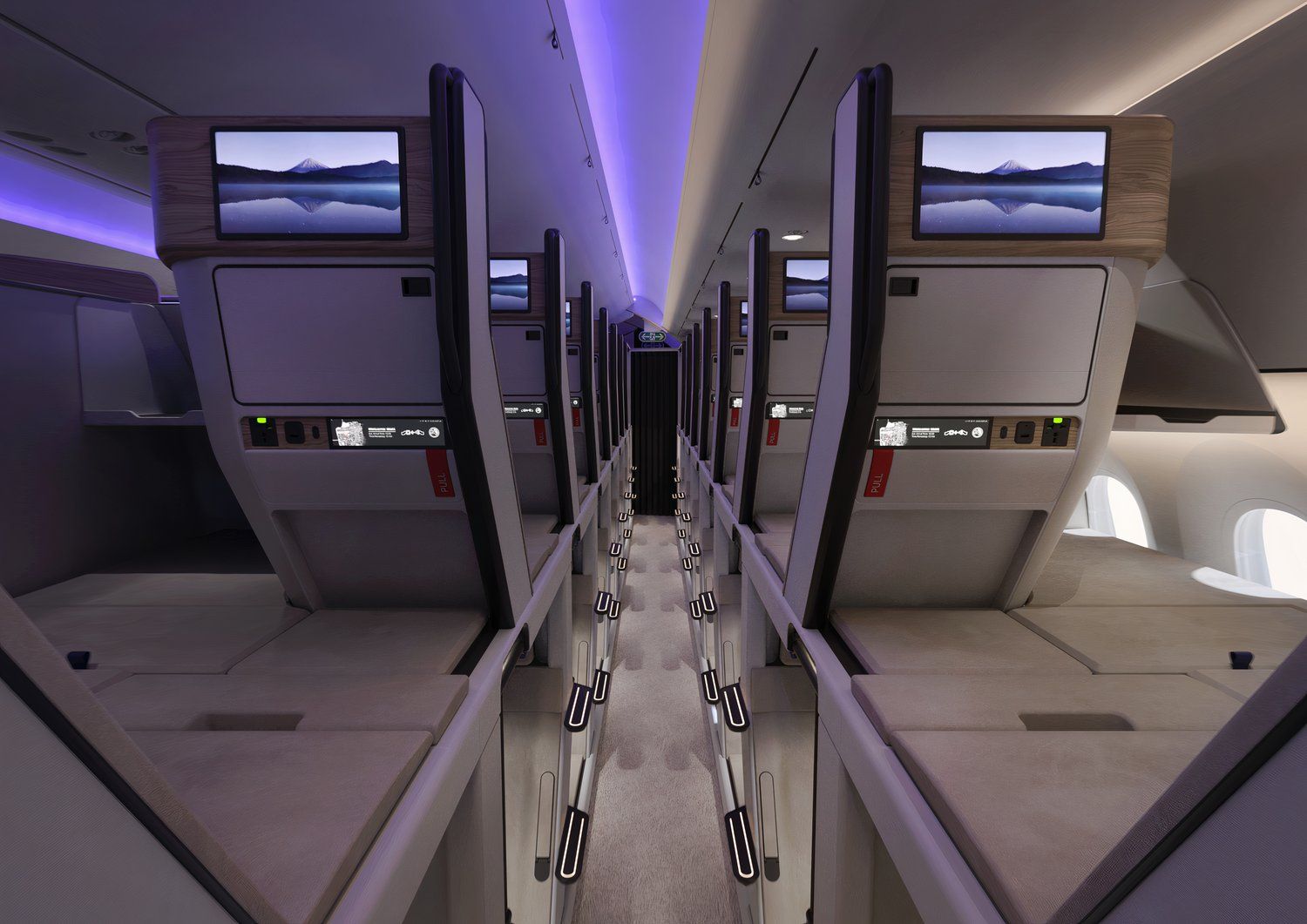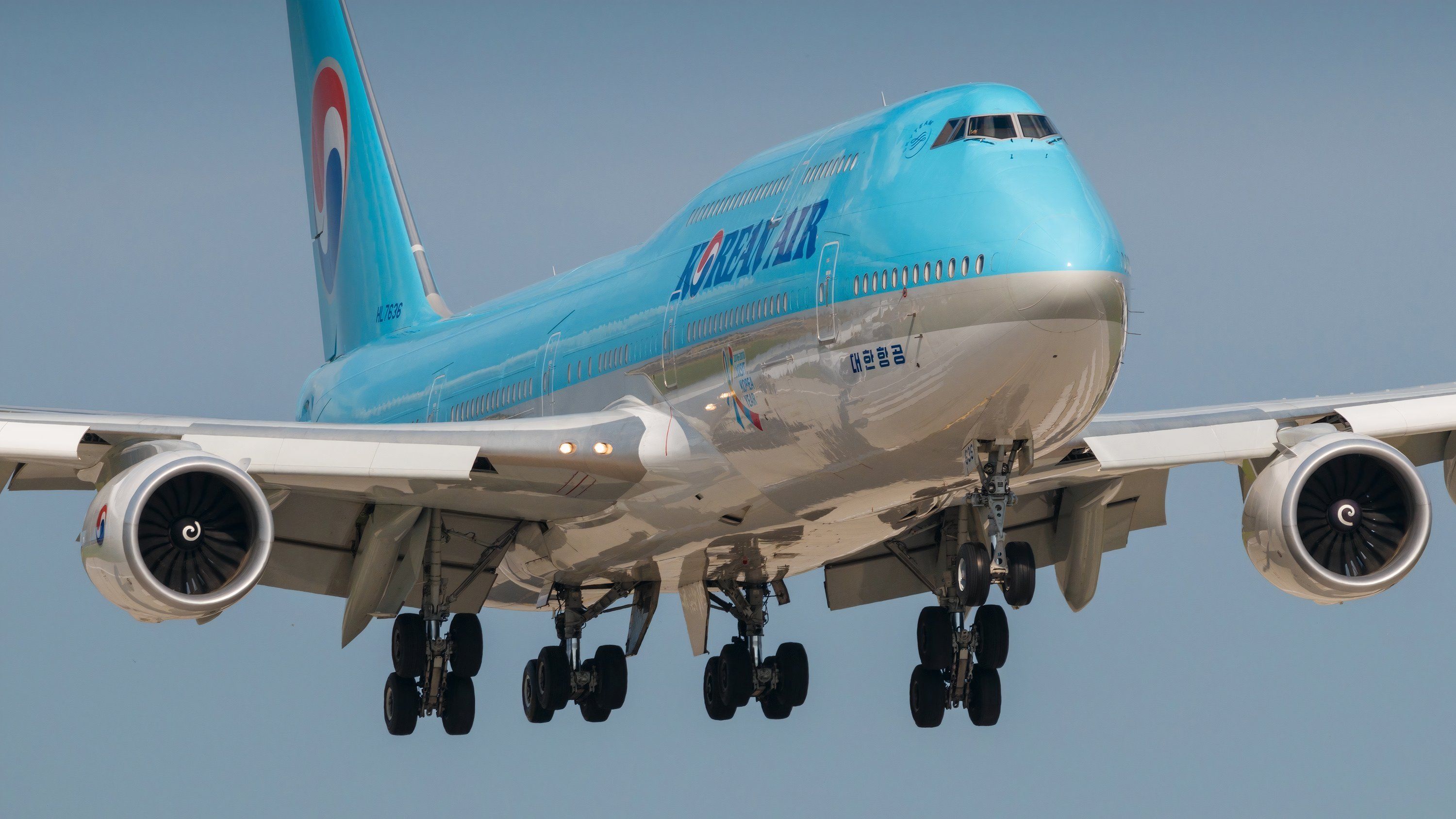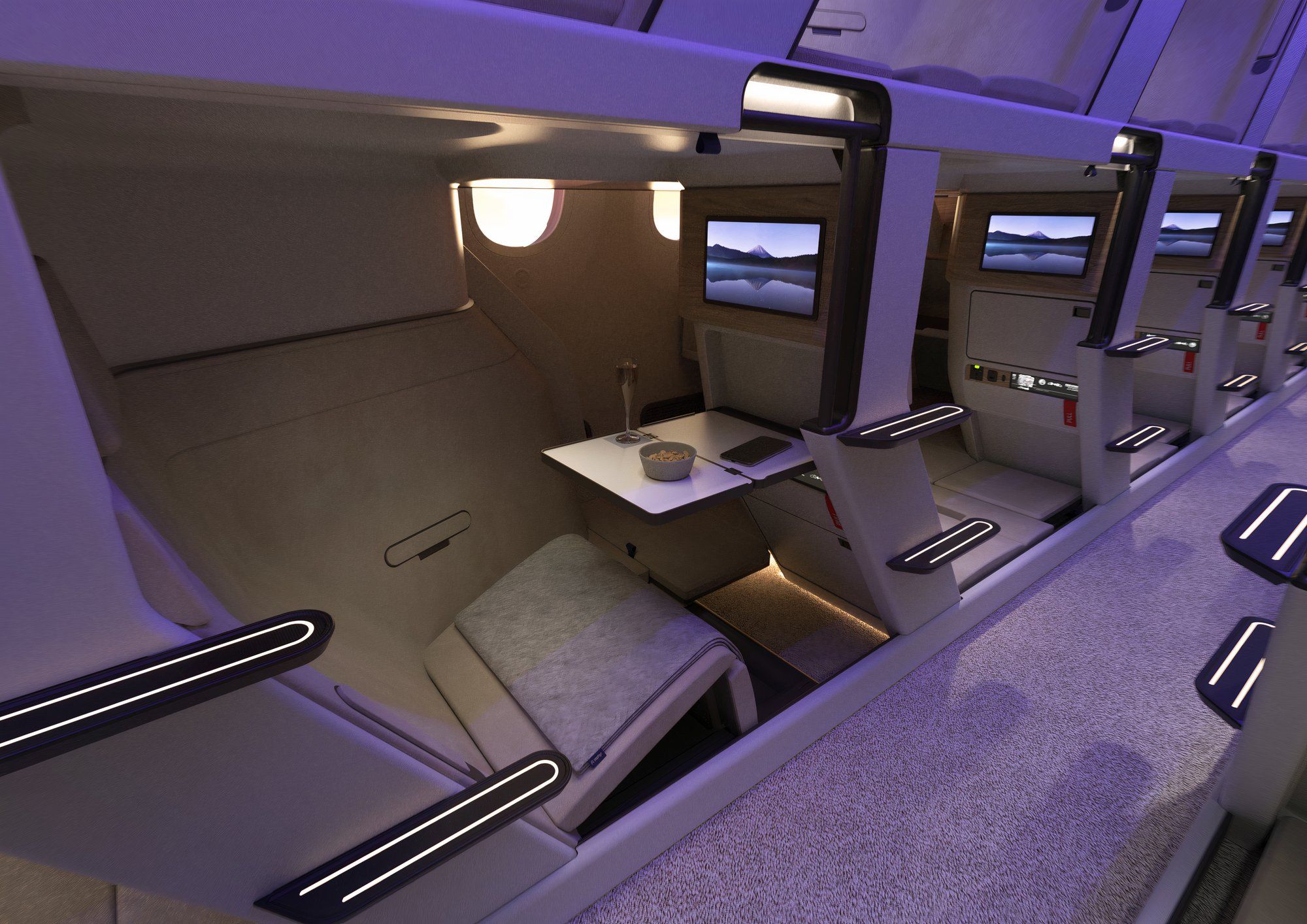Summary
- Double-decker airline seats face challenges in passenger acceptance, weight, and safety regulations.
- Iconic double-decker aircraft like the Boeing 747 and Airbus A380 have faced financial challenges.
- Despite regulatory hurdles and economic pressures, double-decker seating continues to intrigue designers and engineers.
In aviation, innovation often meets the sky-high challenge of balancing passenger comfort, regulatory compliance, and economic viability. Double-decker airline seats, a concept aimed at optimizing cabin space, have captured the industry’s imagination intermittently. But are these designs feasible for commercial flights?
According to NerdWallet, the idea of double-decker seating in airplanes has been introduced previously. One of the earliest concepts dates back to a 1948 patent by Paul David Priebe, which envisioned a two-level seating arrangement. The design, which featured upper-deck passengers facing outwards with large windows and lower-deck passengers with worktables, has yet to make it into production. Despite numerous iterations and patents since then, none have taken flight commercially.
Photo: Zephyr
Modern innovations ahead
Recent designs have attempted to address both comfort and capacity issues. The Chaise Longue Economy Seat, introduced by Alejandro Núñez Vicente at the 2022 Aircraft Interiors Expo, proposes a staggered seating layout. This design promises more reclining, legroom, and privacy by arranging seats in two levels, with passengers either sitting on the upper deck or the lower deck with leg support. Despite the innovative approach, the design remains in the conceptual phase.
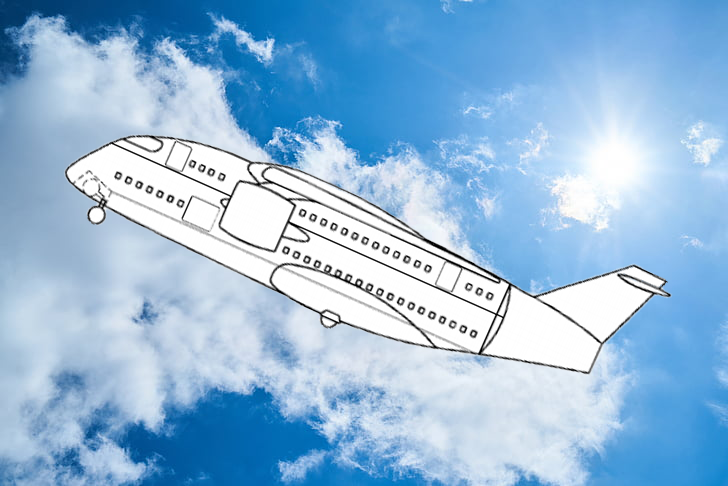
Related
Inside Airbus’ Bizarre Twin Jet Double Deck Plane Concept
Airbus also explored a similar idea in 2015, patenting a design that stacked passengers vertically. The public’s reaction was overwhelmingly adverse, with critiques comparing the design to bunk beds or stacked blocks. Airbus clarified that the patent was merely an exploration of ideas, not an imminent product launch.
Photo: Zephyr
Challenges and regulatory hurdles
While these designs offer creative solutions to increase passenger capacity, they face significant challenges:
- Passenger Acceptance: The concept of double-decker seats often faces resistance from potential passengers. Concerns about comfort, claustrophobia, and the flying experience can be significant deterrents. The adverse reactions to Airbus’ 2015 design highlight passengers’ scepticism and discomfort towards such layouts.
- Weight and Cost: Adding a second level of seating significantly increases the aircraft’s weight, impacting fuel efficiency and operating costs. Airlines continuously seek to reduce weight, often by mere ounces per seat, making the adoption of heavier double-decker configurations less attractive from a cost perspective.
- Safety Regulations: Aviation safety standards regarding head injury criteria during turbulence or accidents are stringent. Designs that place passengers’ heads close to complex structures face substantial hurdles in meeting these safety requirements. Ensuring double-decker seats comply with all safety regulations without compromising passenger safety is a complex challenge.
Photo: Zephyr
The 747 and A380: Real-World Double-Deckers
While double-decker seating remains conceptual, mainly double-decker aircraft have been a reality. The Boeing 747 and Airbus A380, iconic giants of the skies, feature two complete passenger decks. The Boeing 747, introduced in 1970, has an upper deck primarily used for premium seating.
It became a symbol of luxury in air travel, offering exclusive lounges and spacious seating arrangements for first and business-class passengers. The upper deck’s unique hump design not only allowed for more passenger capacity but also provided a quieter and more private flying experience for those seated above.
Photo: Rebius | Shutterstock
The Airbus A380, which took to the skies in 2007, expanded on this concept with two full-length passenger decks, allowing for unparalleled capacity and comfort. It can carry up to 853 passengers in an all-economy configuration, though most airlines choose a mix of economy, business, and first-class seating.
The A380’s design has allowed airlines to experiment with novel in-flight amenities such as onboard showers, bar lounges, and even duty-free shopping areas. Despite these advancements, the A380 has faced economic challenges, with production ending in 2021 due to high operational costs and shifting market demands towards smaller, more fuel-efficient aircraft.
FAA regulations and political wrangling
According to the Federal Aviation Administration (FAA), the governmental body that regulates all civil aviation, double-decker or standing seats must comply with stringent standards, particularly concerning head injury criteria during emergency landings. These regulations ensure passengers’ heads are protected from injury, a significant challenge for stacked seating arrangements.
Additionally, political debates over seat sizes and safety regulations continue, with legislation introduced to reassess evacuation rules and consider passengers’ diverse needs. This ongoing regulatory scrutiny adds another complexity to implementing double-decker seating.
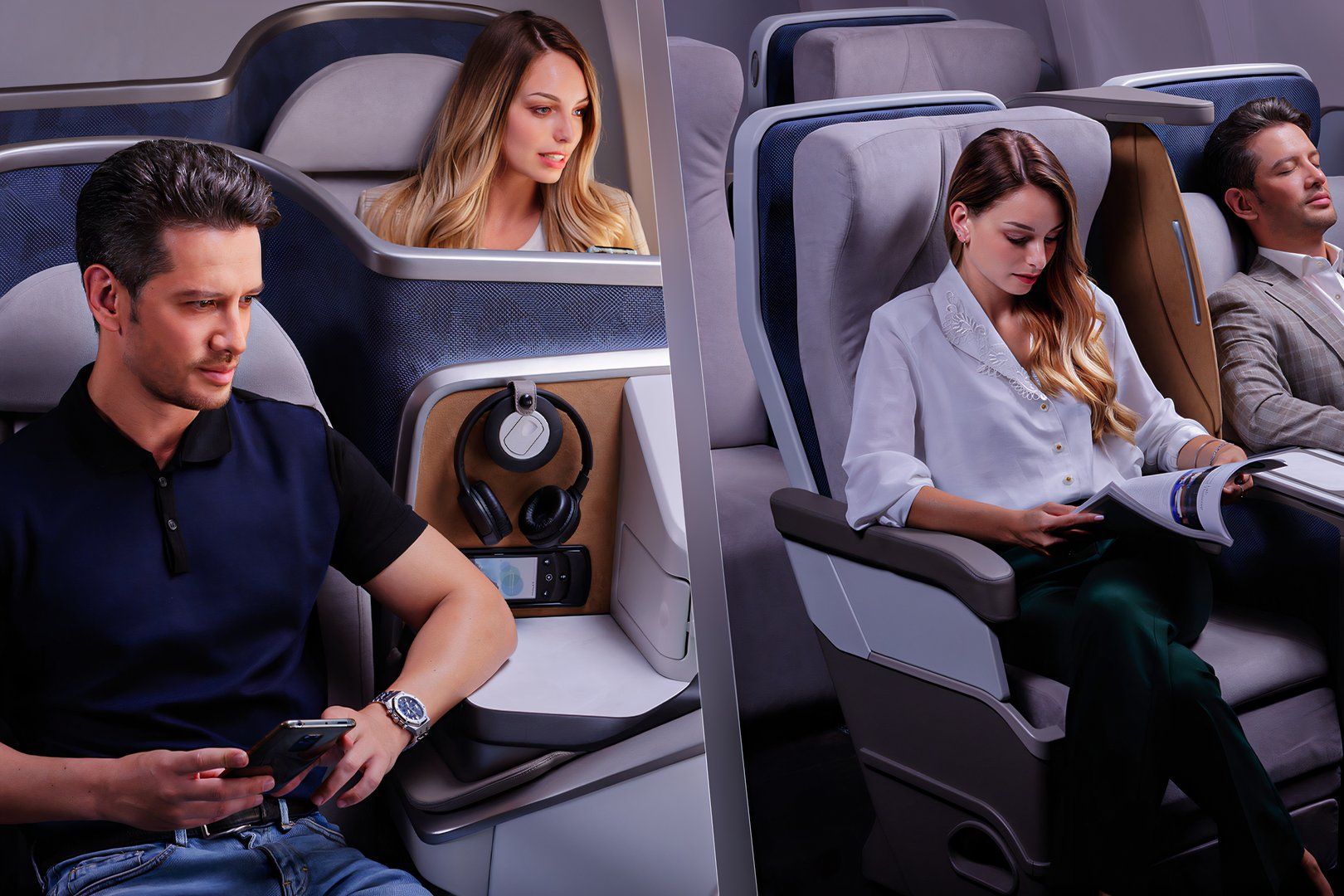
Related
Business Class Beauties: 5 Incredible Seats Made By STELIA
STELIA is a leader in the premium seats industry.
An industry perspective
Despite the technical and regulatory challenges, double-decker seating intrigues designers and engineers. Companies like B/E Aerospace have invested in patents for layered, lie-flat seats aimed at business class, suggesting a persistent interest in maximizing space innovatively. Moreover, the economic pressures on airlines to maximize revenue per flight make such innovations appealing in theory.
|
Year |
Inventor(s) |
Patent Description |
Source |
|---|---|---|---|
|
1948 |
Paul David Priebe |
Two-level seating with upper-deck passengers facing large windows and lower-deck passengers with worktables |
|
|
1995 |
Unknown |
High-capacity, high-comfort split-level seating with elevated feet and integrated airbags |
|
|
2011 |
Unknown |
Layered lie-flat business class seating |
|
|
2015 |
Airbus |
Stacked seating similar to bunk beds, referred to as “mezzanine seating” |
|
|
2021 |
Alejandro Núñez Vicente |
Chaise Lounge Economy Seat with staggered two-level seating for more recline and legroom |
The potential to offer more seats without increasing the aircraft’s footprint is tempting. However, until a design can convincingly address passenger comfort, regulatory compliance, and economic feasibility, it is unlikely that double-decker seats will become a standard feature in commercial aviation.
Photo: Zephyr
Will it ever leave the drawing board?
The journey of double-decker airline seats from concept to reality is fraught with challenges. While the idea has persisted for decades, evolving through various innovative designs, it has yet to surmount the significant barriers posed by passenger acceptance, weight and cost implications, and stringent safety regulations. The aviation industry continues to explore these ideas, driven by the potential benefits of increased capacity and improved passenger comfort. However, the practical implementation of double-decker seats in commercial flights remains, for now, a distant prospect.

